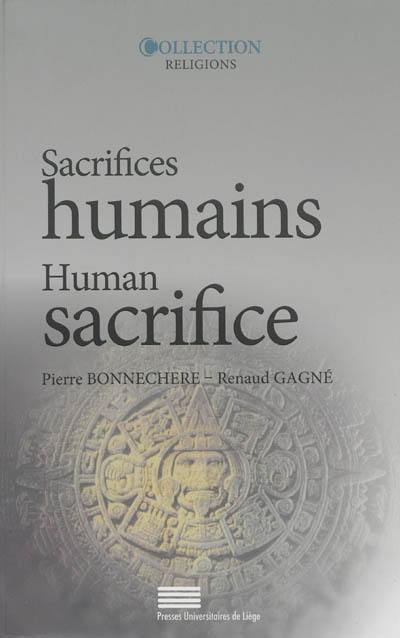
Fiche technique
Format : Broché
Nb de pages : 266-XVII pages
Poids : 550 g
Dimensions : 16cm X 24cm
ISBN : 978-2-87562-021-7
EAN : 9782875620217
Sacrifices humains
perspectives croisées et représentations
Quatrième de couverture
Religions
Comparatisme - Histoire - Anthropologie
L'étude critique et scientifique des religions, conquise de haute lutte, se situe à la croisée des méthodes historique et anthropologique, et favorise le comparatisme. Placée sous la direction d'Annick Delfosse et de Vinciane Pirenne-Delforge, la collection « Religions » aborde les faits et phénomènes religieux dans leur diversité, en dehors de toute vision essentialiste, ce qu'évoquent à la fois le pluriel du nom et les trois termes qui le précisent.
Le thème du sacrifice humain ne peut laisser indifférent et continue de susciter bien des interrogations, entre fascination et dégoût. Historiens et anthropologues se divisent sur l'historicité supposée du phénomène. Pour sortir de l'impasse, cet ouvrage se penche sur la manière dont les cultures se représentent le sacrifice humain, le leur ou celui des autres, fût-il réel ou symbolique. Comment une société fait-elle face à ce qui est - ou ce qu'elle croit être - son passé cruel et sanglant ? Quelles sont les valeurs dont le sacrifice humain, et d'autres concepts proches, comme l'anthropophagie, se trouvent chargés en vertu des normes indigènes ? Comment ces perceptions ont-elles persisté dans la longue durée et comment se sont-elles adaptées aux idéologies changeantes ? Le coeur du volume est consacré au dossier hellénique, remarquablement documenté par les Grecs eux-mêmes. À ce dossier répondent en contrepoint plusieurs articles sur la Chine ancienne, les Aztèques, et la Rome antique, qui projettent un regard différent et sont autant de raisons de remettre cent fois sur le métier cet objet fascinant.
The topic of human. sacrifice, which tends to provoke both fascination and disgust, leaves few people indifferent and remains a highly contestée academic issue, The present volume is not concerned with the historical reality of human sacrifice, a question that continues to divide historians and anthropologists. Rather, it is interested in how different ancient cultures represented human sacrifice differently, both theirs and that of others, either as an event or a symbol. How does a society confront what might have been - or what it thought was - its own cruel, and bloody past ? What are the culturally specific values through which human sacrifice was understood in eacb group, and how did they differ in the case of other related practices, such as anthropophagy ? How have these perceptions changed over time, and how have they adapted to the transformations of ideology ? The core ot the volume is concerned with the abundantly detailed material of ancient Greece. The Greek evidence and its interpretation are challenged by various articles on the ancient practice and its representation in other ancient cultures, China, Aztec Mesoamerica, and imperial Rome, which offer fundamentally different viewpoints, and provide a myriad of occasions for reflecting on contrast and the need to constantly question the fundamental terms of our analysis.





